In the sultry August of 1825, the young Thomas Cole (1801–48) – British born, but trained, briefly, in Philadelphia – took a steam packet boat up the Hudson River. From Manhattan, Cole travelled a hundred miles upstream, arriving at the town of Hudson, where the broad waterway is flanked by peaks and forests. He did so at a momentous point in American history: the Erie Canal, opened that same year, linked the rich agricultural lands of the Midwest to the East Coast, and the river would soon become a great artery of prosperity. Cole’s river journey was also important for the history of American art. Heavily inspired by the aesthetics of the picturesque and the sublime, Cole was the first artist to envisage the possibilities of a new landscape art rooted in the magnificent setting of the Catskill Mountains and the Hudson River Valley. View of the Round-Top in the Catskill Mountains (1827), for instance, offers an unabashedly Romantic view of the region’s topography: the viewer’s gaze passes from a sharply lit mountainous foreground, through a middle ground dominated by the dark shadows, conducive to a Burkean effect of terror, to resolve in a harmonious distance. Here, the Hudson River, dotted with shipping, provides both the symbolic and actual transport to safety and homecoming.
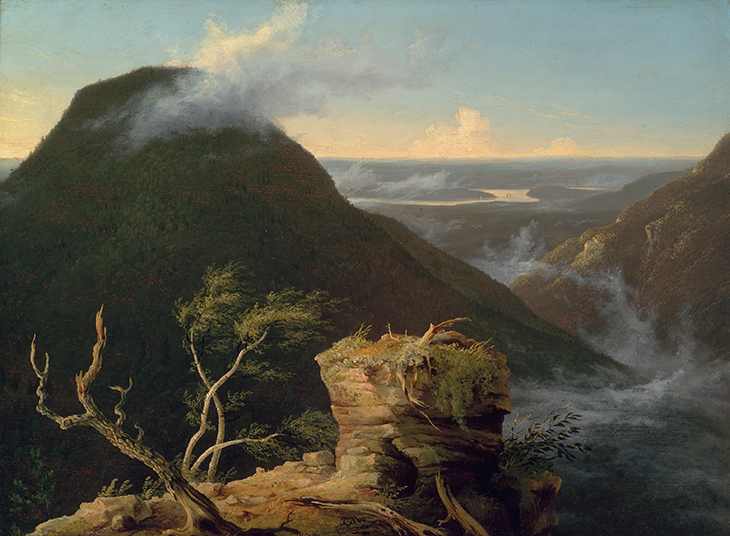
View of the Round-Top in the Catskill Mountains (1827), Thomas Cole. Photo: © Museum of Fine Arts, Boston
In 1836 Cole made a deeper investment in the Hudson scenery by moving to the village of Catskill, overlooking the river and shadowed by the mountains. His modest home, Cedar Grove, survives as a museum. Both before and after his death in 1848, Cole’s studio was a place of pilgrimage for younger artists, critics and patrons. Cole’s only pupil and successor, Frederic Edwin Church (1826–1900), sketched prolifically in the area and purchased a plot of land on a high eminence across the river from Cedar Grove in 1860. Working first with the architect Richard Morris Hunt and then with Calvert Vaux, Church created Olana, the spectacular Moorish villa and studio complex built between 1870 and 1872. Church’s eclectic architectural masterpiece, set in carefully landscaped gardens of Reptonian sweep and drama, fulfilled a prophecy uttered by Cole in a lecture 30 years earlier, in which he imagined the hand of progress transforming the Hudson, such that it might rival the great rivers of Europe: ‘The Rhine has its castled crags, its vine-clad hills, and ancient villages; the Hudson has its wooded mountains, its rugged precipices, its green undulating shores – a natural majesty, and an unbounded capacity for improvement by art…Without any great stretch of the imagination we may anticipate the time when the ample waters shall reflect temple, and tower, and dome, in every variety of picturesqueness and magnificence.’
It was from the windows, porches and lawns of Olana that Church painted a series of supremely fluid and spontaneous oil sketches of the Hudson in every condition of light and weather, from summer thunder to snow under the harsh glare of the winter sun or in the last rays of light before dusk. Church privileged nature over culture, minimising the Hudson’s busy tourist and industrial traffic and concentrating instead on the fleeting effects of light and atmosphere.
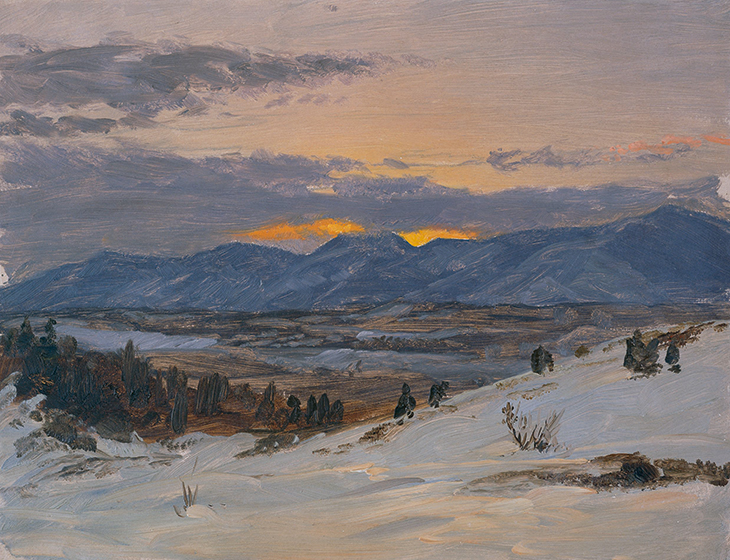
Winter Twilight from Olana (c. 1871–72), Frederic Edwin Church. Olana State Historic Site, New York State Office of Parks, Recreation and Historic Preservation
For the rest of the 19th century, this particular region of New York State came to symbolise the nation itself, and the work of the ‘Hudson River School’ – a retrospective term for the loose-knit community of landscape painters active in the region from 1825 until the close of the century, including lesser luminaries such as Sanford Gifford, John Frederick Kensett and Jasper Francis Cropsey – became celebrated as a homegrown American genre of fine art. Church emerged from the Civil War as the most famous painter in America, indissolubly associated with the Hudson Valley, his home and his most consistent subject. He won renown not only for his studiously detailed and euphoric essays in the American sublime, but also for his restless travels in the Middle East, the Caribbean and, most significantly, South America, following in the footsteps of Alexander von Humboldt. His exhibition pictures, panoramic in scope and admired at international exhibitions and in chromolithographic facsimile, were both local and global in ways that prefigure key concerns of the art world of today.
Almost two centuries have passed since Cole’s voyage upstream and upstate, and the Hudson Valley has witnessed the great arc of American history: industrialisation, mass immigration and environmental degradation in the first half of the 20th century; economic transformation and crisis in the 1970s; and a slow recovery since. At the mouth of the Hudson, New York City, of course, was swiftly transformed during the 19th century from the small, vulgar and mercantile sibling of splendid Philadelphia and Boston, into a world capital, boasting the palatial mansions of the Gilded Age, and the cultural institutions endowed so handsomely by the tycoons who inhabited them. However, by 1950, after the Second World War, at the moment that New York ‘stole the idea of modern art’, the Hudson River entered its darkest days, shadowed by rusting industrial complexes, polluted by poisonous effluents and largely abandoned by tourists. The names of Cole and Church were forgotten and their works entirely neglected. An exhibition held in Chicago in 1945 on the Hudson River School, and the publication of Wolfgang Born’s book, American Landscape Painting: An Interpretation (1948), came at the nadir of their fortunes, which coincided with the emergence of Abstract Expressionism among artists of the ‘New York School’. In the years after the war, there began a slow process of recuperation that has returned Cole and Church to the canon of American art.
As if in parallel with the redemption of these two masters of landscape from art-historical oblivion, the Hudson Valley has in recent decades begun to reassert itself as a home to environmental conservation and aesthetic innovation, once again a favoured retreat for New York City’s cultural and artistic elite from the rigours of urban life. In the vanguard of this move back to nature was the minimalist sculptor Dan Flavin (1933–96), whose trademark installations of fluorescent tubes seemed to play on the ambivalence of American light – its associations both with the neon and limelight of Manhattan, and with the sharp clarity of the sunlight on the Eastern seaboard and its reflections on the Hudson’s eddying surfaces. Flavin moved in 1966 to Lake Valhalla, New York, and in 1970 settled at Garrison, New York, on the banks of the river. He began to collect drawings by the Hudson River School artists, and made numerous drawings himself in which the imprint of the landscape can be discerned.
In more recent years, the flow of artistic development has turned against that of the river. Instead of moving inexorably towards the New York art world, a generation of artists, echoing Cole and Church, has shifted its practice back into the Hudson Valley, seeking, perhaps, larger spaces and lower studio rents, as gentrification relentlessly pushes young artists out of the formerly Bohemian areas of the city (Greenwich Village, SoHo, Chelsea, and now most of Brooklyn as well). But as with Cole and Church, the motivation is as much aesthetic as economic: many members of the region’s new artistic community engage with ideas of environment and genius loci, mediated through the multifarious artistic genres of today. At the same time, Olana and Cedar Grove, both in decrepit condition in the 1970s, have been superbly restored and revivified, with sensitive attention to the historic interiors matched by a commitment to bold exhibition programmes extending far beyond the expected pieties to their household gods.
An innovative current exhibition, ‘River Crossings: Contemporary Art Comes Home’ (until 1 November), performs an act of transhistorical interpretation and illumination, by installing new or recent work by 28 artists connected with the Hudson River Valley in the historically numinous interiors of Cole’s home, Cedar Grove, and Church’s Olana. The exhibition is itself the result of a timely collaboration between a practitioner, the landscape painter Stephen Hannock, and the art historian Jason Rosenfeld, a professor at Marymount Manhattan College who specialises in both 19th-century landscape painting and contemporary art. Hannock’s work has for decades been haunted by memories of Cole, the distant but benign paterfamilias of American painting. The panoramic vista of Cole’s View from Mount Holyoke Northampton, Massachusetts, after a Thunderstorm – The Oxbow (1836), the most celebrated American landscape at the Metropolitan Museum of Art, provided the compositional point of origin for an extensive series of works by Hannock exploring questions of recollection and association. In The Oxbow, Flooded, for Frank Moore and Dan Hodermarsky (2013), Hannock modifies Cole’s composition using his signature technique of ‘polished oil,’ and inscribes his canvas with handwritten text scratched into the dense layers of paint – providing a postmodern reiteration of Cole’s definitive Romantic utterance.
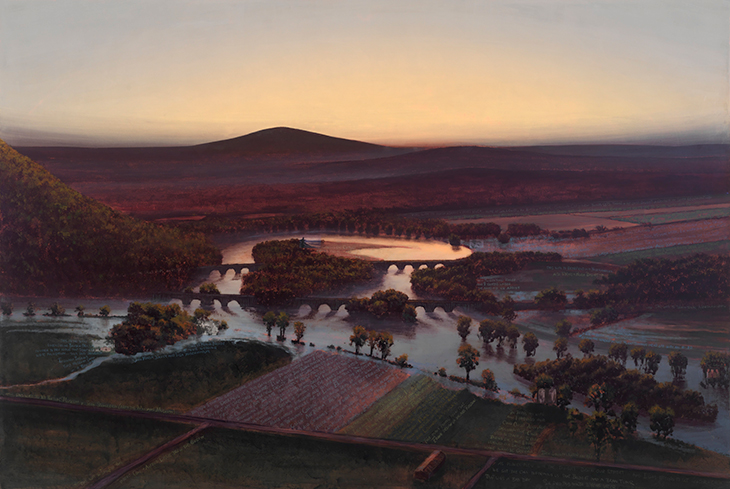
The Oxbow, Flooded, for Frank Moore and Dan Hodermarsky (2013), Stephen Hannock. Courtesy Yale University Art Gallery and Caroline and Tiger Williams
The exhibition, at both its sites, also emphasises the way in which the physical environment can shape an artist’s work. Moving through the spaces of Cedar Grove and Olana, noting the hand-carved wooden balustrades and doorframes, one is aware that these buildings were crafted from local materials. But they were also placed so as to command magisterial views of the natural world. Olana’s ‘viewshed’ is now protected by an avid local community and, to a degree, by legal restrictions (unusual given America’s generally tepid attitude to historical preservation). The meadowlands around Cedar Grove, which commanded a fine view of the Hudson and were once owned by the painter, have long been built over, but the river remains a palpable presence.
In these hallowed spaces, the contemporary works resonate in new ways. Martin Puryear’s eloquent, looping sculpture, Question (2010), is fashioned from soft local woods – pine, ash and tulip poplar (described as ‘the Juno of our groves’ by Thomas Jefferson) – as were Olana’s window casements and door jambs. Positioned in the grand central hallway of Church’s home, where the artist’s family would present small theatrical productions, Puryear’s work appears balletic and graceful, uncurling its long neck like a plant in spring. Yet the title of the work also suggests a semiotic reading: is this elongated creature following the contours of a question mark – the most sinuous of diacritics? The same, strangely, has been asked of Cole’s Oxbow: the central motif, it has often been suggested, itself resembles a question mark. Should the viewer align himself behind nature or culture; wilderness or progress; poetry or profit? Almost two centuries later, profit’s defeat over poetry is as clear as that of ‘progress’ over the American wilderness. Perhaps, then, Puryear’s organic form is bowed over in mourning for a lost world.
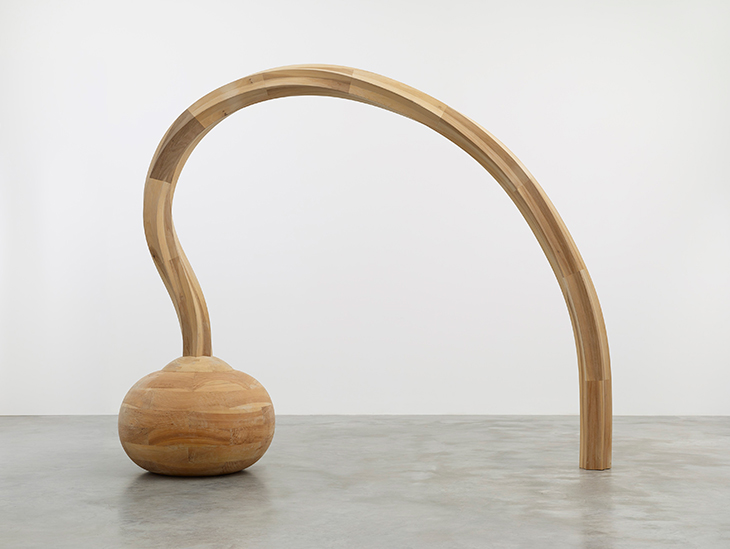
Question (2010), Martin Puryear. Photo: courtesy Matthew Marks Gallery; © Martin Puryear
Frederic Church would stare for hours from Olana’s high windows at the topography of the Hudson beneath him. Maya Lin moves one step further in Silver River – Hudson (2011), adopting the Archimedean viewpoint of the mapmaker and taking as her motif the Hudson’s channel, from its origins far to the north-west, to where it meets the ocean in New York Harbor. She transforms the absolute flatness of a map into a three-dimensional sculpture, resembling a silver tendril or the root system of some refined hothouse plant. In this act of defamiliarisation, she reminds us that maps are complex signifiers, simultaneously abstractions and indexical representations of the world around us. A graceful play on the process of casting, where the molten metal flows like a silver river until it discovers its final form, Lin’s sculpture emphasises the fragility, as well as the beauty, of the waterway. The curators’ relocation of this work from its usual resting place at the mouth of the Hudson in Manhattan seems to have taken it on a pilgrimage towards its own point of origin, the source of the river.
Cartography, topography and imagined geographies mingle in the work of Jerry Gretzinger, whose artistic career has been largely devoted to a single, all-consuming and pleasingly impractical project. A Kurt Schwitters of the atlas, for more than 50 years he has been creating a sprawling collage map depicting a fictive world of his own invention, now numbering more than 3,000 eight by ten inch panels. Gretzinger has fashioned a site-specific iteration of part of this global project on the staircase and landing walls of Thomas Cole’s house, Cedar Grove. In Cole’s time, the Catskill landscape was barely mapped, and the artist’s own peregrinations took him from hiking paths laid out by the owners of the Catskill Mountain House Hotel to areas of untouched wilderness left as blanks on the map. But in the era of global surveillance and GPS, the artist, rather than the cartographer, must take responsibility for the imaginative elements of mapping – peopling the landscape with thoughts, feelings and associations. Thomas Cole did this in his finest works, replete with personal, political and religious ramifications; Jerry Gretzinger achieves the effect through a process of bricolage.
Shortly before Thomas Cole’s untimely death at 46, in 1848, he sat before a Daguerreotype camera, and his image is preserved with uncanny clarity; a modern example of this technique features in ‘River Crossings’ in a site-specific installation devised by Angie Keefer. Landscape photography, however, was in its infancy, and Cole had no opportunity to respond to the ‘pencil of nature’ in his practice as a landscape painter. But for Church, the photographic was a constant presence: the challenge for the painter in this new visual ecology was to exceed what could be done with lenses, emulsions and sepia tints; to scan details more intently and record colours ever more exuberant or fugitive.
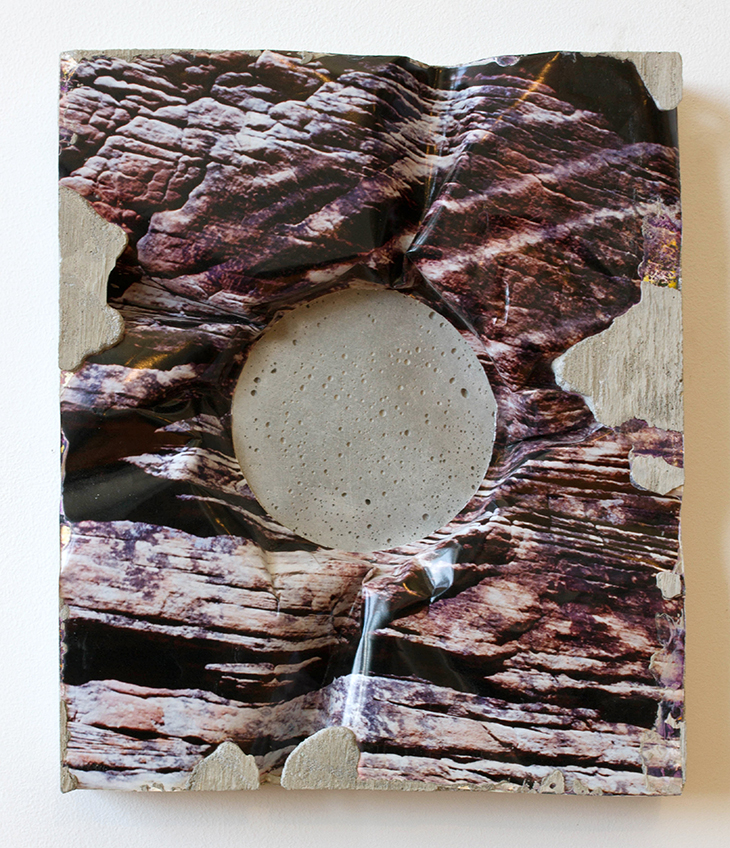
Rock Hole Punch (Utah Canyon) (2014), Letha Wilson. Courtesy Letha Wilson
Photography features significantly in ‘River Crossings’, and perhaps its most striking exponent is Letha Wilson, whose Rock Hole Punch (Utah Canyon) (2014) combines a richly saturated photographic print, distressed by some form of violent pummeling, with a large concrete element. The printed surface constitutes a meticulous geological study, scrupulous in its Ruskinian fidelity, as if collected on a 19th-century scientific mission or painterly pilgrimage to the West. But the image field is subjected to an unexpected, vulgar intrusion: a large disc of industrial concrete penetrates the surface, dull and deathly. It is as if, when hiking in the remote wilderness, one were suddenly to encounter a six-lane highway, a fracking site or some other industrial despoliation. In Wilson’s work the meeting of nature and culture is not the happy metamorphosis that Cole imagined, transforming the Hudson into the Rhine with art and taste. It is a compressed paradox, a juxtaposition of ancient strata, local and sacred, with the bland, pocked surfaces of contemporary global industrialism.
‘River Crossings’ is a brave venture: premised on a sense of place all too rare in the airport-art era of the biennale, it posits an unexpected meeting of the pre- and the post-industrial. Angela Miller suggested in the 1990s that we should rename the Hudson River School ‘The First New York School’, as a key precursor to the triumphalist moment of Abstract Expressionism. Perhaps we are now encountering a Third New York School. As in the 1830s, its focus lies not amid the skyscrapers at the estuary of the Hudson but far inland, in the heartlands of the American sublime.
‘River Crossings: Contemporary Art Comes Home’ is at Olana and the Thomas Cole Site until 1 November.
From the June 2015 issue of Apollo. Preview and subscribe here.
Unlimited access from just $16 every 3 months
Subscribe to get unlimited and exclusive access to the top art stories, interviews and exhibition reviews.

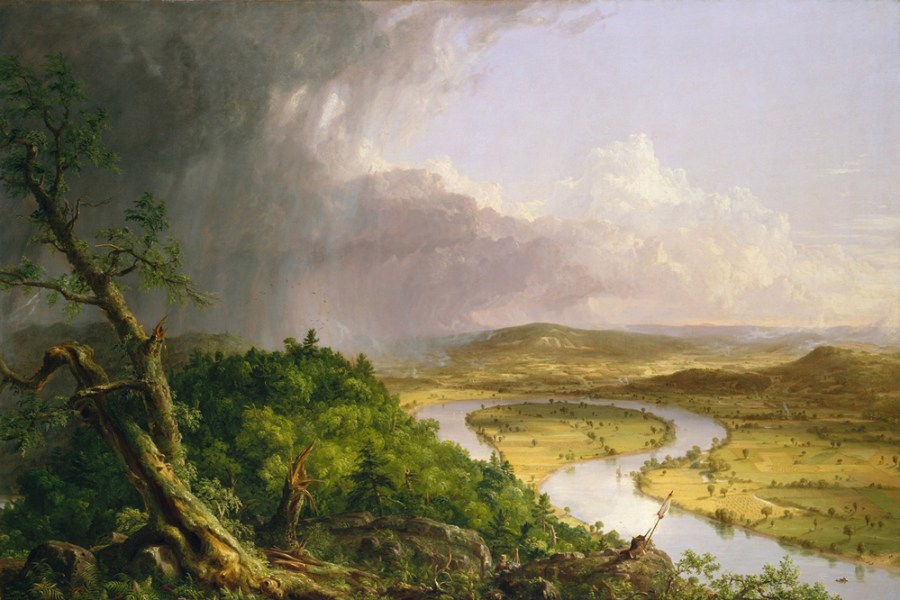
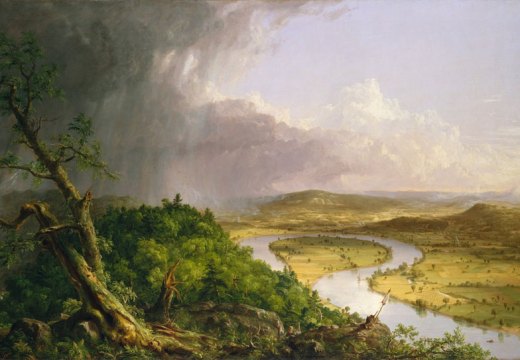
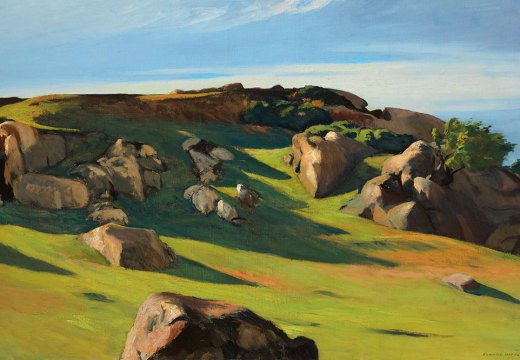
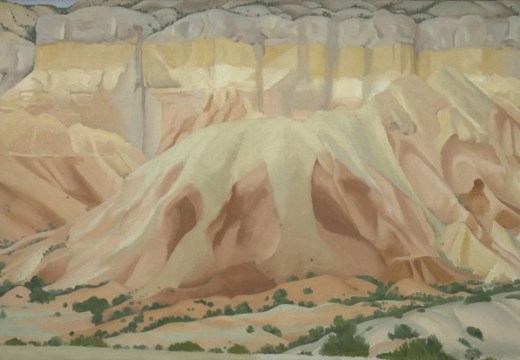









![Masterpiece [Re]discovery 2022. Photo: Ben Fisher Photography, courtesy of Masterpiece London](http://www.apollo-magazine.com/wp-content/uploads/2022/07/MPL2022_4263.jpg)
It’s time for the government of London to return to its rightful home